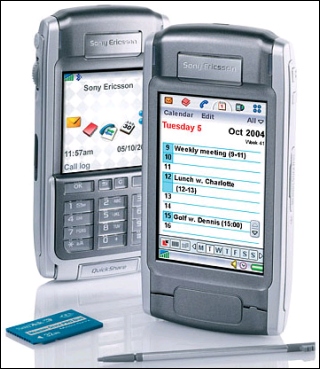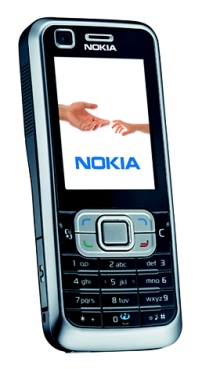 Little known fact time. The original Symbian-based Nokia Communicator, the Nokia 9210, had all the software hooks in the operating system and built in applications to support a touch screen and stylus, but the production models shipped with a non-touch screen. And since then all of Nokia’s Symbian devices have been sans-touch screen.
Little known fact time. The original Symbian-based Nokia Communicator, the Nokia 9210, had all the software hooks in the operating system and built in applications to support a touch screen and stylus, but the production models shipped with a non-touch screen. And since then all of Nokia’s Symbian devices have been sans-touch screen. Sony Ericsson, on the other hand, started down the road of the touch screen with the P800, and their UIQ powered devices to this day continue to use this technology. As an aside, it will be interesting to see how the Motorola MOTORIZR Z8 handles UIQ without the touch screen, but that’s for another time.
I’m not here today to talk about the merits of choosing one interface style over the other, but to talk about the difference that adding a touch-screen to a device makes to the usability of the device.
Reflectivity
Probably the most obvious problem with touch screens is that they add two more layers of material to the screen construction, and that means not only a slight reduction in the clarity of the screen, but it also creates more glare. While this isn’t recognisable indoors, take your phone outside and you’ll see the difference that sunlight can cause. This is something that doesn’t affect me that much in Scotland, but showed up as a problem when I was in Texas in March.
The laws of physics mean you can’t really change this without a huge change in either screen technology or the cost of the screen – you just need to wait a few years for everything to slowly catch up. Although there is still a marked difference in the quality of screens under strong light, it is nothing compared to the difference in quality from screens of just a few years ago. But for now, it really is an area to watch out for when you buy a new phone.
Ease of Use
So why have a touch screen? Well it depends on what you want to do with the phone. Even though Symbian OS is generally fully featured, usage of the powerhouse Sony Ericsson P990 is going to be radically different to that of the recently announced Nokia 6120 classic. Touch screen smartphones are, rightly or wrongly, perceived as being more complicated to use – with extra applications that are more suited to stylus control (e.g. presentations, spreadsheet software) available on the touch screen devices. In many cases they’re even bundled into the device’s firmware at the factory.
 Looking to the Future
Looking to the Future
As our smartphones continue to gain more features, the user interface will become critical. The one handed approach will continue to be polished by both the S60 team and parts of UIQ, to make sure that the core features that consumers expect to see will be easy to use and provide a broad base of functionality.
Touch screen devices will provide that final 20% of features that readers of All About Symbian and other power users strive for. The P series of devices will be regarded as the leading Symbian computers (as opposed to smartphones), Windows Mobile devices will continue to be driven by stylus and touch screen, and the quirky multi-touch screen on the upcoming Apple iPhone device – while it remains to be seen if it is a gimmick or genuinely useful – will also contribute to the idea of a touchscreen being required for a ‘computer.’
Perception
The principle of a touch screen being on a complicated device is rather self servicing. Because of the nature of the device, it always will attract the so-called power users – and these users are the ones most vocal about issues such as sun reflectivity, every minute of lost battery power and every minor problem.
But these are growing pains, and we have to remember that while we may have been living with Symbian OS (and its predecessors) for over ten years, the majority of people will be coming to these phones with no prior experience.
And touch screens are starting to work their way into the mid-range, with the Sony Walkman branded W950, launched in the festive season. While I’m still of the opinion that many of the on-screen controls are so small that you are forced to use the stylus, there are a lot of signs in the UIQ interface that consideration is starting to be made for big fat fingers as opposed to a stylus, with some oversized buttons along the bottom of the screen, essentially replicating the idea of soft keys.
Choose Your Tools
It comes down, as with every feature on a phone (or a car, or a Playstation), to - 'do you need what is being offered?' Touch screens are a help in one sense but a hindrance in others. It’s a very finely balanced pay-off, and because of that it is unlikely that the touch screen will become a default on every smartphone.
And, at some point, Nokia may well decide the hardware is ready, and add a touch screen to a few S60 devices. The code is definitely willing…
Ewan Spence, 25 April 2007
